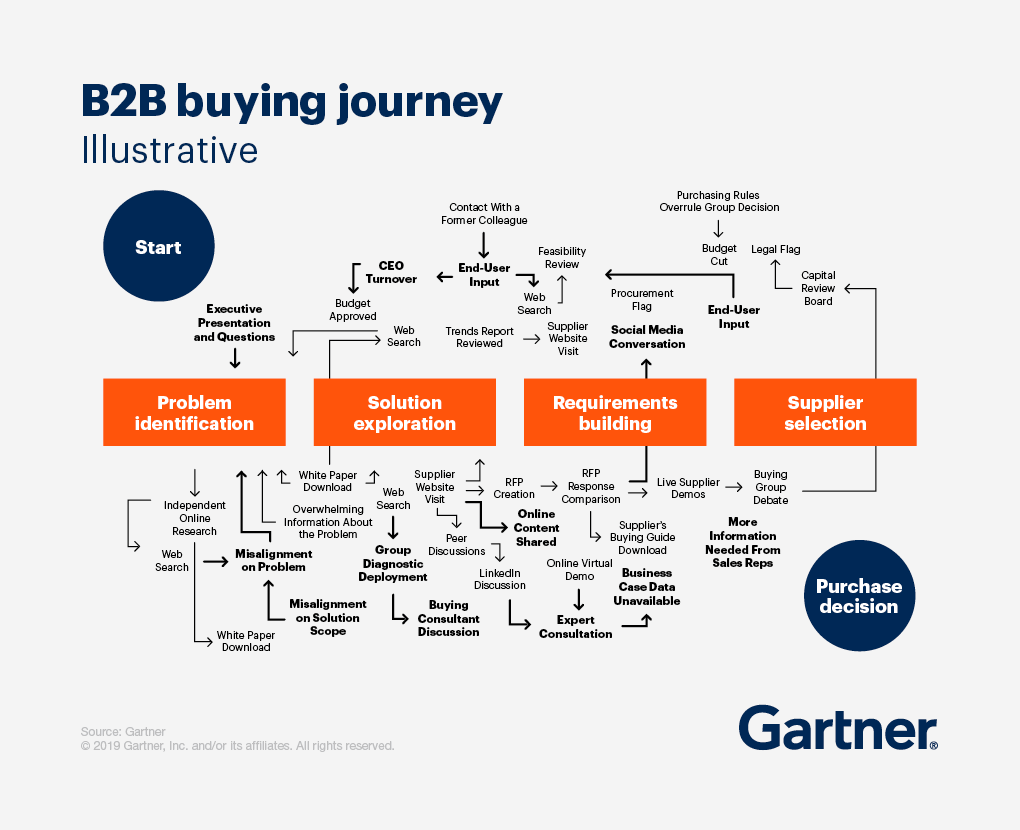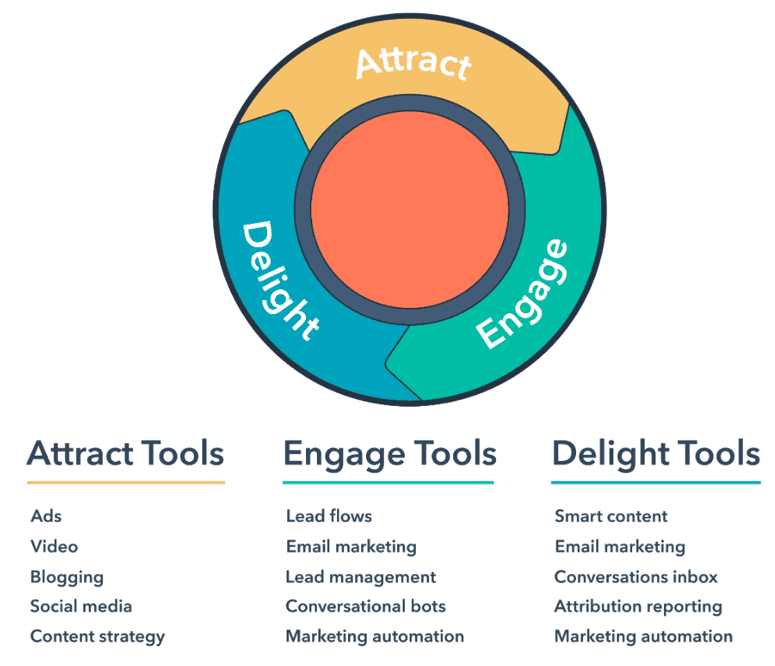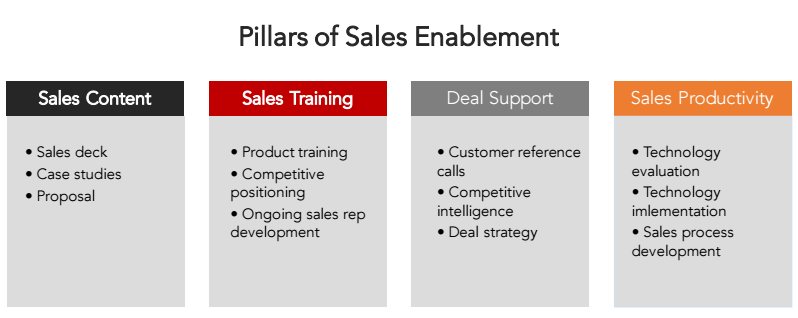Content Marketing for Manufacturers: How to Build a Successful Strategy
Pouria Nastaean
While traditional marketing efforts have served manufacturers well for many years, incorporating a modern approach now is a must. Content marketing for manufacturers, in its simplest form, is creating content that answers your potential buyer’s questions early in their research process and throughout the buying journey.
The content you create serves many purposes: create brand awareness, generate leads, build credibility with buyers, and much more. So, if your buyers are searching for answers to their questions and you haven’t created any content for them to find, who will they get their answers from? Your competitors.

Why is Content Marketing Valuable for Manufacturers?
Marketing and selling to B2B buyers, in general, can be tricky, and the landscape is ever-changing. Add in the complexities of product and channel for manufacturers, that only compounds the challenges. Focusing on content marketing can help. Here’s how:
Build Credibility and Trust
A B2B buyer is looking for a solution to their problem that they can trust. It’s not common that they will just accept the first solution they find. They will likely look around to find the best solution for their needs before making any decisions. That’s why it’s important that your content showcases your expertise, experience, and showcases the value you can bring. Ultimately people want to work with someone who is credible and trustworthy. Highlight those things by creating case studies, client testimonials, and more.
Increase Visibility
Organic searches can be your most significant source of traffic and revenue. According to HubSpot, their biggest source of traffic is and continues to be blogging! Part of your content marketing strategy should include promoting your content across the channels that your persona uses. Whether it’s using SEO to show up on the Google SERP, posting on Facebook, or using paid ads on LinkedIn. This allows you to reach more people and increase your brand awareness.
Gain a Competitive Advantage
Content marketing for manufacturers is especially important because if you’re not doing it, you can trust that your competitors are or will at some point. And if they aren’t yet, then you’ll have an advantage by getting your content out there first. Content marketing is a great way to gain market share and move up the ranks in your industry.
Recommended Reading: Solutions to 5 Common Manufacturing Challenges in 2020
Opportunity to Share Mission and Personality
This is a benefit of content marketing that is often overlooked but can be a powerful one. Content marketing allows you to give life and a personal touch to your products or services. People don’t just want to work with a company, they want to work with people. Your buyers want to work with people who truly care about their customers and provide value to them. Creating content that showcases your mission and the company’s personality can help build trust and humanize you further.
Solve for Complex B2B Buying Cycles
We don’t have to tell you that products in manufacturing are usually technical and complex. While the buyer is often sophisticated and specialized themselves – like an engineer, they’re still looking for educational materials. In fact, a survey conducted by engineering.com found that overwhelmingly – engineers still turn to search or website blogs to find answers to their most technical questions. Your content should be what guides them to a solution and exceeds their expectations.

Content Marketing Strategies for Manufacturers
Fewer than one in four respondents of the Manufacturing Content Marketing Benchmarks, Budgets, and Trends survey noted that they have a documented content marketing strategy. Those with a written strategy report the top benefits as being an aligned team around joint mission and goals, and that it makes it easier to determine which content to develop.
Every marketing initiative needs to be driven by a solid strategy and end goal in mind. Content marketing for manufacturers is no different. Here are some tried and true strategies below. Also, who says you have to pick just one? Often the best results come from layering strategies.
Content for SEO
Supercharge your content marketing efforts by aligning it with SEO. Not only will you be educating and helping potential buyers who are coming to your website, but you’ll also be casting a wider net by adding the Google SERP to your arsenal.
Start by doing some keyword research on what your personas are searching for on Google. The idea is to find out what questions your personas are asking and use that information to create an SEO strategy that promotes your helpful content.
Look for keywords with a lower keyword difficulty and a fair amount of search volume to use as a blog topic. Focus on providing value for your persona and solving their pain points, while keeping in mind some SEO best practices, like including your keyword in your title and linking to outside sources of information.
Account Based Marketing
HubSpot defines ABM as a focused growth strategy in which Marketing and Sales collaborate to create personalized buying experiences for a mutually-identified set of high-value accounts.

At its core, it turns the funnel upside down and aligns sales and marketing to hunt with spears instead of nets. Manufacturers benefit from building an account-based marketing framework by:
- Creating higher quality opportunities
- Tightly aligning sales and marketing
- Streamlining and often speeding up the sales cycle
- Expanding business relationships in key accounts
- Better measure ROI
Related Reading: 4 Account Based Marketing Email Examples to Inspire You
DemandBase found that companies that have been using ABM for at least one year saw an increase in 10% revenue, 19% of those surveyed saw revenue growth in excess of 30%.
So, where does content come in to play? You use highly relevant content to engage your target accounts. For example, ABM could call for a LinkedIn ad for a white paper or video with a call to action to download your case study. The best part about content for ABM? It can be repurposed elsewhere for inbound marketing or leveraged in nurture sequences.
Inbound Marketing
Inbound marketing is a great way to establish credibility and be present when your persona is ready to have a more sophisticated sales conversation. Having that credibility reflects on your company’s products and services. It shows that you’ve thought about your persona’s pain points and address them in your services. The goal is to keep your company top of mind when they are ready to solve their problem. Here’s are the three phases:

Image Source: HubSpot.com
Attract: Here is where you draw in the right people (right being the key word) with content and resources that they will find valuable. This will help establish you as a trusted source and someone they’ll want to engage with. Whether it’s using SEO to show up in the Google SERP, utilizing an email list for email marketing, regular social media posts, or even pay-per-click advertising.
Learn more about email marketing services here.
Engage: This is where you will present your insights and solutions to their problems and goals. If you can either solve their pain point or help them reach their goal, they are more likely to do business with you. Every professional buyer has their own unique sales process. This is why it’s important to create content that addresses each stage of the buyer’s funnel. This includes having a diverse field of topics while using different delivery methods such as blogs, tools, e-books, and pillar pages. You’ll also engage by leveraging marketing automation to nurture your leads into customers.
Delight: Last but not least, delight. Here you provide help and support customers to find success with their purchase.
Related Reading: 5 Signs Inbound is Right for Your Business
Sales Enablement
Content marketing plays a major role in a sales enablement strategy. Implementing a B2B sales enablement strategy can align your internal teams and empower your sales team with the tools they need to close more deals. Marketing does this by providing should provide various resources such as blogs, guides, and demonstrations to help sales close more leads. For example, a sales rep can refer to a helpful pillar page to showcase your company’s expertise in a certain area.
Related Reading: A Roadmap to Sure-fire B2B Sales Enablement Strategy

Image Source: Salesforlife.com
Social Media Marketing
According to Oberlo, 90.4% of Millennials, 77.5% of Generation X, and 48.2% of Baby Boomers are active social media users. With an audience on social media that continues to grow, more and more of your target personas will become social media users as well. Businesses using social media as part of their marketing strategy saw an increase in revenue of 24%.
Before you put together an effective social media strategy, you must ask yourself:
- What channels are my target personas using? (Facebook, LinkedIn, etc.)
- What kind of content will they engage with?
- How can I get them within my reach?
- What is the goal of my social media campaign?
Social media can be a great way to engage with your persona’s, but don’t spend too much time on a channel that might not make sense. Focus on creating a strategy that works within the areas your personas are spending the most time. Each social media channel should be used to promote the content you create. Pay attention to who engages with that content and how they respond to it. This can give you a better idea of what their looking for and provide any insight you might have never thought about. It can also be a method of qualifying your leads.

Content Marketing Tips for Success
Be Consistent
Content marketing for manufacturers should be organized and consistent. The content you produce should be created with a purpose and part of a well planned, longer-term strategy. Creating content once every six months isn’t going to move the needle for your overall strategy. Find a content creation cadence that works for your company and stick with it.
Align Sales & Marketing
Having your sales team tightly aligned with your content marketing strategy will maximize your results. When your sales and marketing teams are aligned, sales is more likely to use the content that marketing is creating and marketing is more likely to create good content for sales. Everybody wins. It’s essential to have the right tools and technology on hand to allow sales to follow up with any qualified leads as soon as they engage with your content.

Image Source: Organimi.com
Diversify Content
Content marketing doesn’t need to be cranking out blogs every single week. Make it a fun and creative way to portray your business’s personality, expertise, and value. Everyone digests information differently. Some enjoy reading a blog post, while others will benefit from an infographic or tool. Utilize the many different formats and get creative with it. One great way that’s proven its worth is video marketing. Learn about the benefits of video marketing here.


